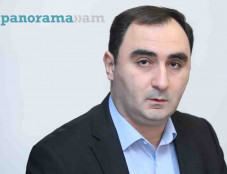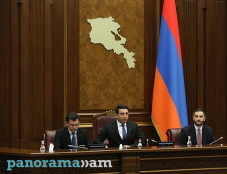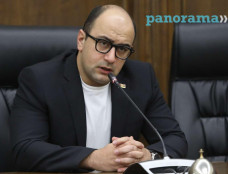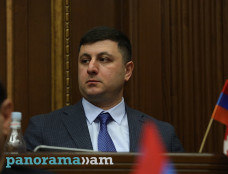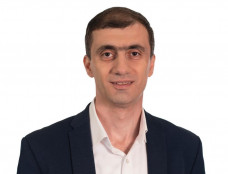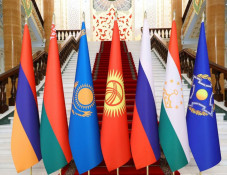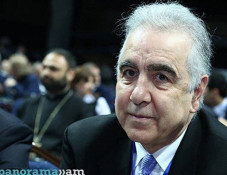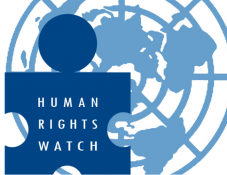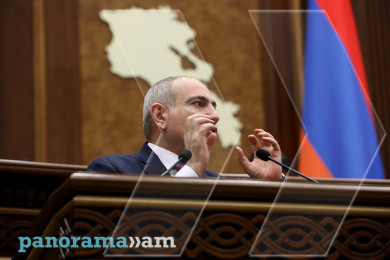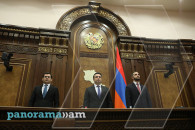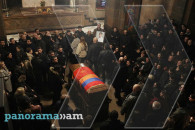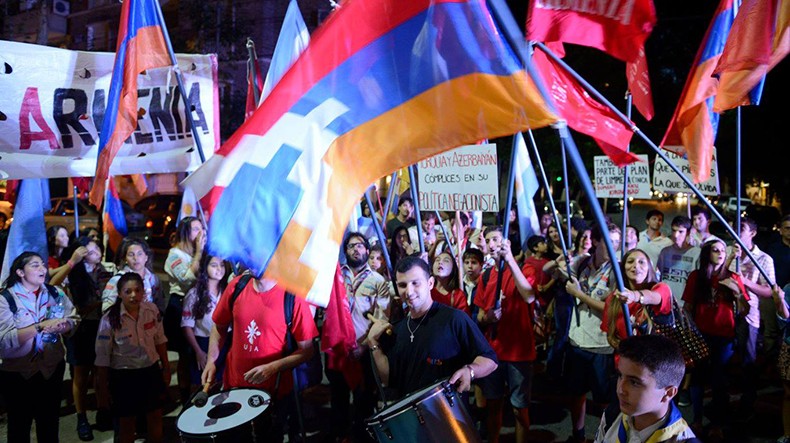
Argentina: Armenian youth holds protest outside Azerbaijan Embassy to commemorate pogroms of Armenians
Athletic Union and Scouts (Homenetmen) organised a rally and demonstration outside the Embassy of Azerbaijan in Argentina on February 26 to commemorate the 28th anniversary of the beginning of the massacres of Armenians in Sumgait, Baku and Kirovabad, Prensa Armenia reports
.
"The massacres of Sumgait, Baku and Kirovabad were the continuation of the plan of ethnic cleansing that began during the Armenian Genocide," said Axel Costanian, member of AYF. "The denial and violation of human rights matrix on which both States were built remain today.”
The Armenian communities all over the world commemorate February 26 as they do April 24, the day considered the beginning of the genocide perpetrated by the Turkish State against the Armenians. "Today, Turkey and Azerbaijan fill their jails with journalists and activists. Azerbaijan threatens to resume war against the Republics of Armenia and Nagorno Karabakh. Turkey supports the Islamic State and hinders the peace process in Syria. Azerbaijan uses black lists to prosecute those who challenge the authorities. Turkey harasses intellectuals with the infamous article 301 of the penal code, the same they used to condemn Hrant Dink. And we cannot forget the persecution of Kurdish people, especially the Peoples' Democratic Party," concluded Costanian as cited by Prensa Armenia.
The agency notes that the Azerbaijani authorities instigated the massacre as a response to the Armenians’ struggle for the independence of Nagorno Karabakh, a region historically inhabited by Armenians, which Joseph Stalin annexed to Azerbaijan Soviet Socialist Republic as an autonomous region in 1923, during Armenia and Azerbaijan’s sovietisation.
Starting from 1988, along with the collapse of the Soviet Union, the Karabakh movement for independence and joining to Armenia began. The response of Azerbaijan’s government were the pogroms in Sumgait, Baku and Kirovabad. In 1991, Armenia and Nagorno Karabakh declared independence. By 1992, the clashes had already grown to a full-scale war between Turkey-backed Azerbaijan and Nagorno Karabakh. In May 1994, a ceasefire regime was declared – which lasts so far despite the Azerbaijani government violating it – and OSCE Minsk Group was created as a mediator, Prensa Armenia writes.
The term pogrom denotes persecution and massacre targeting a religious or ethnic group. The term was used to refer to the attacks against the Jews in the Russian Empire (especially in Ukraine and Belarus) in the 19th and 20th centuries. The main characteristics of the pogroms in Azerbaijan, still denied by the country’s government, was that the crimes were committed by groups the government supported, Prensa Armenia highlights.
According to the report Armenia submitted to the UN, “This massacre left dozens of Armenians dead, a majority of whom were set afire alive after being beaten and tortured. Hundreds of innocent people received injuries of different severity and became physically impaired. Women, among them minors, were abused. More than two hundred apartments were robbed, dozens of cars were destroyed and burned, dozens of art and crafts studious, shops and kiosks were demolished. Thousands of people became refugees.”
On 26-29 February 1988 in terms of actual complicity of local authorities and inaction of the USSR government mass pogroms of civilians were organized in Sumgait city of Azerbaijani SSR, accompanied by unprecedented brutal murders, violence and pillaging against the Armenian population of the city. Armenian pogroms in Sumgait were carefully organized. At the meetings, which began on February 26 in the central square, city leaders openly called for violence against the Armenians.
On February 27, protests which were attended by hundreds of rioters turned into violence. Armed with axes, knives, specially sharpened rebar, rocks and cans of gasoline and with the pre-compiled lists of apartments where Armenians lived the rioters broke into the houses, turning everything upside down there and killing the owners. At the same time, people were often taken out to the streets or to the courtyard for jeering at them publicly. After painful humiliations and torture the victims were doused with gasoline and burnt alive. On February 29 army troops entered Sumgait but without an order to intervene. Only in the evening, when the mad crowd began to attack the soldiers the military units took up decisive steps.
The exact number of victims of Sumgait pogroms is still unknown. According to official data, 32 people were killed; however there is ample evidence that several hundred Armenians have been killed in the city in three days. There is also evidence that the riots were coordinated by KGB in Azerbaijan. Executioners of Sumgait were subsequently declared as national heroes of Azerbaijan.
Related news
- Adam Schiff: The Sumgait pogroms were not an accident
- US Armenian community holds protest in New York in front of building of Azerbaijan permanent mission to UN
Newsfeed
Videos






